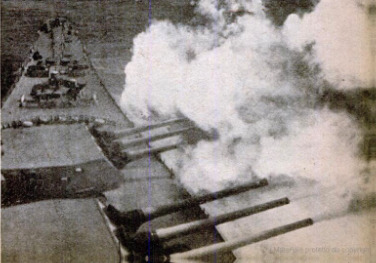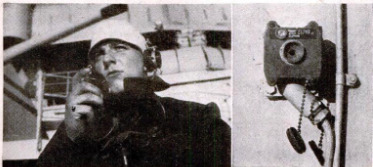-
Title (Dublin Core)
-
I cruised on the lowa
-
Article Title and/or Image Caption (Dublin Core)
-
I cruised on the iowa
-
extracted text (Extract Text)
-
Bzz .. bzz . . bzzz—"
The 45,000-ton U.S.S. Jowa, mightiest
battleship ever built, cleaves gray-green
Atlantic waters at top speed. A red flag
surmounting a signal halyard tells fishing
smacks to stand clear. And through wads
of cotton stuffed in the ears of sailors and
landlubbers, bunched near the prow, filters
the penetrating sound of a buzzer. It warns
that the ship’s main battery of nine 16-inch
guns is about to fire a broadside.
Squarely in the middle of the long buzz
comes the thunderclap. Spurts of flame
dart from the muzzles of the giant rifles.
Billows of orange smoke follow. The brutal
force of the explosion seems to cave you in
—as if you had suddenly been struck a
physical blow from all sides at once. Like
a living thing, the ship itself quivers be-
neath you. Reverberations of the blast echo
back to your ears for perhaps 20 seconds.
At night, the shells themselves become
the center of the display. Coated with a
bright-red tracer compound, they resemble
Chinese lanterns floating through the air,
as they rise from the ship and descend ‘into
the sea far away. Traveling together in
groups of three from each turret, the fire-
balls trace parabolic arcs in perfect align-
ment, testifying to the mathematical preci-
sion of the guns that launched them.
Awe-inspiring spectacles
like these highlighted a week
that I spent with Bob Smith,
POPULAR SCIENCE camera-
man, aboard the most gi-
gantic fighting machine that
man has yet devised. The oc-
casion was the shakedown
cruise of the Iowa, name ship
of her class of six battle-
ships. Since then, the Navy
announces, the 880-foot. bat-
tlewagon has been making
things hot for the Japanese.
With so little vibration
that we never noticed it—
though engineers were check-
ing it with instruments like
miniature seismographs—the
Iowa glided from her New
York anchorage and headed
north, during the evening
meal or shortly after.
Scrambling from our cots
at dawn, we found the battle-
wagon about to drop anchor
at Portland, Me. Our early-
morning arrival amazed me.
Aided by a speed test, the
vessel made the trip within a
few hours of fast train time.
According to the U. S.
Navy's official and conserva-
tive figure, the Towa makes
“30-plus” knots, the highest
speed ever built into an
American capital ship. Just
what that “plus” amounts to,
the enemy will not learn here,
But the Towa’s total of 200,-
000 horsepower, nearly twice
the horsepower of the 35,000-
ton North Carolina class,
shows clearly that many of
her extra 10,000 tons have
been invested in the power
plant that drives her. The
first U. S. warship to be designed with
the aid of the Navy's magnificent new
model-testing basin at Carderock, Md., the
Iowa gets the most out of her propelling
machinery. The curious curves of her
streamline hull part the water with scarcely
a ripple, and only the deck-high spray of
spume from her four propellers testifies to
the tremendous forces harnessed in her
high-pressure, high-temperature turbines.
Guns of the main battery, in the Iowa
class, follow the number, size, and arrange-
ment found eminently satisfactory on the
North Carolinas. Six of the 16-inchers are
mounted forward and three aft, all in triple
turrets. They constitute at least a match
for the gun power of any ship afloat—
equaling the nine 16-inchers on Britain's
four ships of the 40,000-
ton Lion class, and also
the nine 16-inchers said
to arm Japan's reported
new battleships of 40,000
tons or more. Only these
two naval powers have or
are believed to have bat-
tleships approaching the
might of the Towa, her three
sister ships now in Service, and two others
near completion.
Next day we steamed seaward. At a safe
distance from anything that might get hit,
the 16-inchers opened up on the target—
a vertical square affair on a raft, towed by
a tugboat at the end of a generous 1,000-
foot cable. Though I had no telescope pow-
erful enough to observe results closely, I
doubt very much if that target will ever be
used again.
Antiaireraft guns seemed to bristle from
every vantage point of the Iowa. They
included 20-mm. (about 08-inch) Oerlikon
guns for close range; 40-mm. (about 16
inch) Bofors guns for medium range; and
the dual-purpose five-inchers, usable
against both planes and surface craft.
For targets, Navy men on the deck in-
flated black balloons with buoyant gas from
cylinders, and sent them aloft—either
singly or in clusters. To us, it seemed that
each group of guns was being ordered to
hold its fire until the balloons almost drifted
out of its range. Then the barrels of the
Oerlikons began chattering, the Bofors guns
pounded, and the five-inchers opened up
with cracks that rivaled even the big rifles.
We laughed to find ourselves cheering on
the gunners, and yelling approval as one
balloon after another burst in the sky.
Secking official rating of the score, we
were gravely informed that it was “4.0"—
which sounded precise enough until we
learned that 4.0 is top grade for exam
papers, and therefore Navy slang for any-
thing excellent.
‘We wanted to get into one of those big
turtle-domed 16-inch turrets and see what
the inside looked like. A friendly gunnery
officer took our part. One way, he ex-
plained, led through the bowels of the ship.
The nearer approach was to crawl on deck
right under the rear overhang of the turret,
and scramble up through a hatch.
From the turret officer's booth, a few
steps forward took us to the guns them-
selves, mounted in dep individual pits.
For loading, the gun is aimed slightly up-
ward. Then, as the crew showed us, sepa-
rate dumb-waiters bring up a 2,400-pound
shell and the standard powder charge. In
turn these are rammed home by one of the
most curious mechanisms imaginable—a
power-operated coil of hinged metal blocks,
forming a rigid shaft as it unwinds.
In modern practice, a central control sta-
tion high enough for good visibility serves
as the nerve center for all turrets. In this
system, called director firing, the gunnery
officer presses a trigger in a pistol-like grip
to fire a whole broadside at once.
Near the base of each 16-incher, we no-
ticed, the sailors had painted on such
féminine names as “Mary” and “Agnes.”
“Millie” apparently had fallen from favor,
for her name was all but erased with a
stroke of a paint brush.
Members of the gun crew told us they
never wore ear cotton, and that all they
heard of a 16-inch gun's blast within the
heavy turret was a muffled thud. And, in
fact, we found it perfectly possible to nap
in our cabin during a major bombardment
outside, after we had seen and heard enough
on deck to satisfy us.
Did you know that battleships have more
periscopes than submarines? We found
the heavily armored tower stations replete
with them—a natural state of affairs, come
to think of it, when the only other way of
looking outside is through narrow eye slits
in the thick walls. Scales on the periscope
mountings, in addition, give the exact bear-
ing of objects picked up by the rotating
instruments.
In the navigating station, we saw how
the great ship keeps on her course. Sur-
rounded by compasses and other indicating |
dials, the helmsman grasps no large-spoked
steering wheel such as an old seafarer’s |
imagination might conjure up. Instead, he
merely turns a solid disk less than two feet
in diameter. Powerful steering engines,
magnifying the power of his hands in- |
numerable times, swing the twin rudders
that guide the ship. The reason for using
two rudders, by the way, is simply that
a single one of sufficient area to steer the
enormous vessel would be too large."
I had wondered whether Navy men pre-
served the old “no-whistling” tradition on
shipboard. They do. There was no super- |
sition about it, several of them explained |
to me, but simply the danger of confusing
a sailor's careless whistle with the shrill |
note of the bo'sun’s pipe.
This is the attention-calling signal that
precegles important announcements over the
Iowa's public-address system—issuing or-
ders such as “prepare to darken ship,” pag- |
ing officers, transmitting customary bugle
calls, and announcing news of general in-
terest. To me its most exciting summons,
often repeated during training exercises,
was: “General quarters—man your battle
stations!” It was a command fo be heard
in real earnest during more recent days.—
ALDEN P. ARMAGNAC.
-
Contributor (Dublin Core)
-
Robert F. Smith (Photographer)
-
Language (Dublin Core)
-
eng
-
Date Issued (Dublin Core)
-
1945-01
-
pages (Bibliographic Ontology)
-
80-83,222,226
-
Rights (Dublin Core)
-
Public Domain (Google Digitized)
-
References (Dublin Core)
-
lowa
-
Archived by (Dublin Core)
-
Sami Akbiyik
-
Marco Bortolami (editor)
 Popular Science Monthly, v. 146, n. 1, 1945
Popular Science Monthly, v. 146, n. 1, 1945
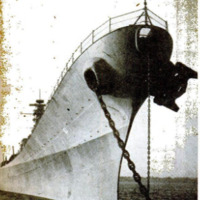 Ekran Resmi 2022-07-19 14.13.41.png
Ekran Resmi 2022-07-19 14.13.41.png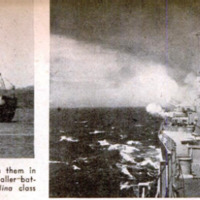 Ekran Resmi 2022-07-19 14.13.51.png
Ekran Resmi 2022-07-19 14.13.51.png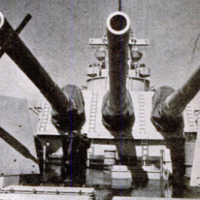 Ekran Resmi 2022-07-19 14.13.59.png
Ekran Resmi 2022-07-19 14.13.59.png Ekran Resmi 2022-07-19 14.14.08.png
Ekran Resmi 2022-07-19 14.14.08.png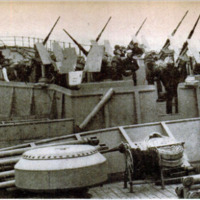 Ekran Resmi 2022-07-19 14.14.13.png
Ekran Resmi 2022-07-19 14.14.13.png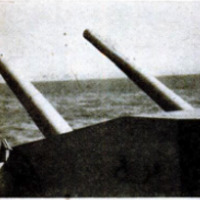 Ekran Resmi 2022-07-19 14.14.21.png
Ekran Resmi 2022-07-19 14.14.21.png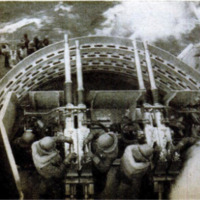 Ekran Resmi 2022-07-19 14.14.26.png
Ekran Resmi 2022-07-19 14.14.26.png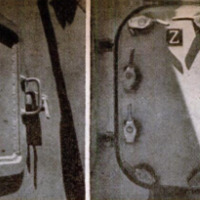 Ekran Resmi 2022-07-19 14.14.32.png
Ekran Resmi 2022-07-19 14.14.32.png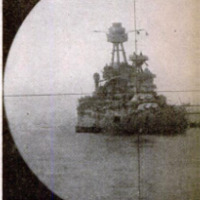 Ekran Resmi 2022-07-19 14.14.36.png
Ekran Resmi 2022-07-19 14.14.36.png Ekran Resmi 2022-07-19 14.14.42.png
Ekran Resmi 2022-07-19 14.14.42.png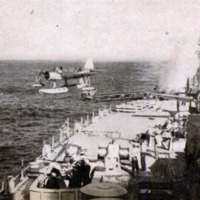 Ekran Resmi 2022-07-19 14.14.53.png
Ekran Resmi 2022-07-19 14.14.53.png



